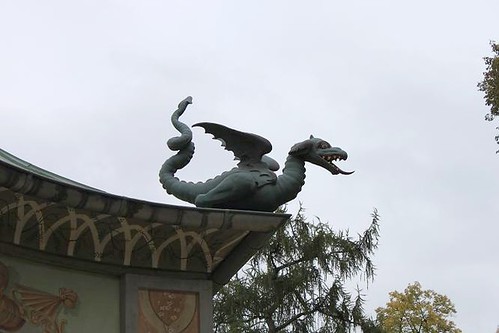Tucked away in the northern hills of Sanssouci Park in Potsdam, the Dragon House (Drachenhaus) is one of the most unique buildings in the entire park. Built between 1770 and 1772 by Carl von Gontard, the structure reflects Frederick the Great’s fascination with Chinoiserie, the European interpretation of Chinese architecture and design that was all the rage in 18th-century royal courts.

Why Is It Called the Dragon House?
The name comes from the sixteen ornamental dragons that decorate the roof edges of the building. These mythical creatures aren’t just decorative, they symbolize the exotic and mystical allure that Frederick II sought to evoke through Chinese-inspired structures.
Chinoiserie in Prussian Architecture
The Dragon House was part of a larger trend in European Rococo and Enlightenment-era architecture that borrowed stylistic elements from East Asia. In addition to its dragons, the house features a pagoda-style roof, curved eaves, and decorative details that blend Prussian craftsmanship with exotic flair.
This fascination with China was more about fantasy than authenticity. For the Prussian court, Chinoiserie represented an ideal of serenity, order, and harmony with nature, a fitting concept for the peaceful retreat of Sanssouci Park.

The Dragon House Today: A Café with a View
Since 1934, the Dragon House has served a new purpose, as a restaurant and café. Surrounded by forest and sitting atop Klausberg hill, it offers one of the most serene and scenic spots to enjoy a coffee, lunch, or a slice of cake.
If you're hiking through the northern parts of the park or visiting nearby attractions like the Belvedere on Klausberg, the Dragon House café provides a charming and historical break.
